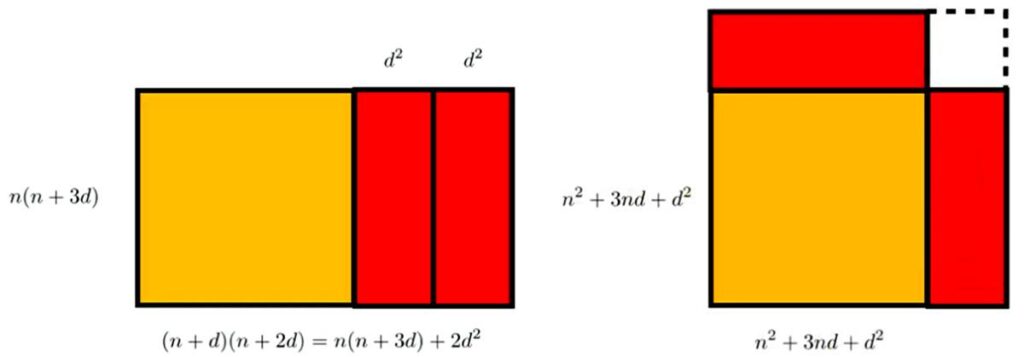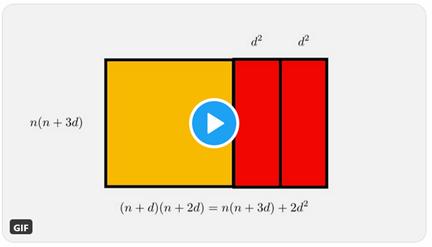![]() This problem from Colin Hughes at Maths Challenge is a most surprising result that takes a bit of tinkering to solve.
This problem from Colin Hughes at Maths Challenge is a most surprising result that takes a bit of tinkering to solve.
“Problem
We can see that 3 x 4 x 5 x 6 = 360 = 19² – 1. Prove that the product of four consecutive integers is always one less than a perfect square.”
The result is so mysterious at first that you begin to understand why the ancient Pythagoreans had a mystical relationship with mathematics.
See the Consecutive Product Square.
(Update 11/12/2020) Generalization and Visual Proof
From Fermat’s Library on 4 November 2020 we have a visual proof of a generalization of the consecutive integer problem:
“A visual proof that the product of 4 positive integers in arithmetic progression is the difference of two squares
n(n + d)(n + 2d)(n + 3d) = (n² + 3nd + d²)² – (d²)² ”


